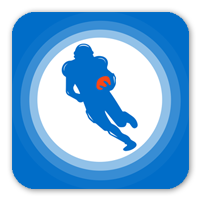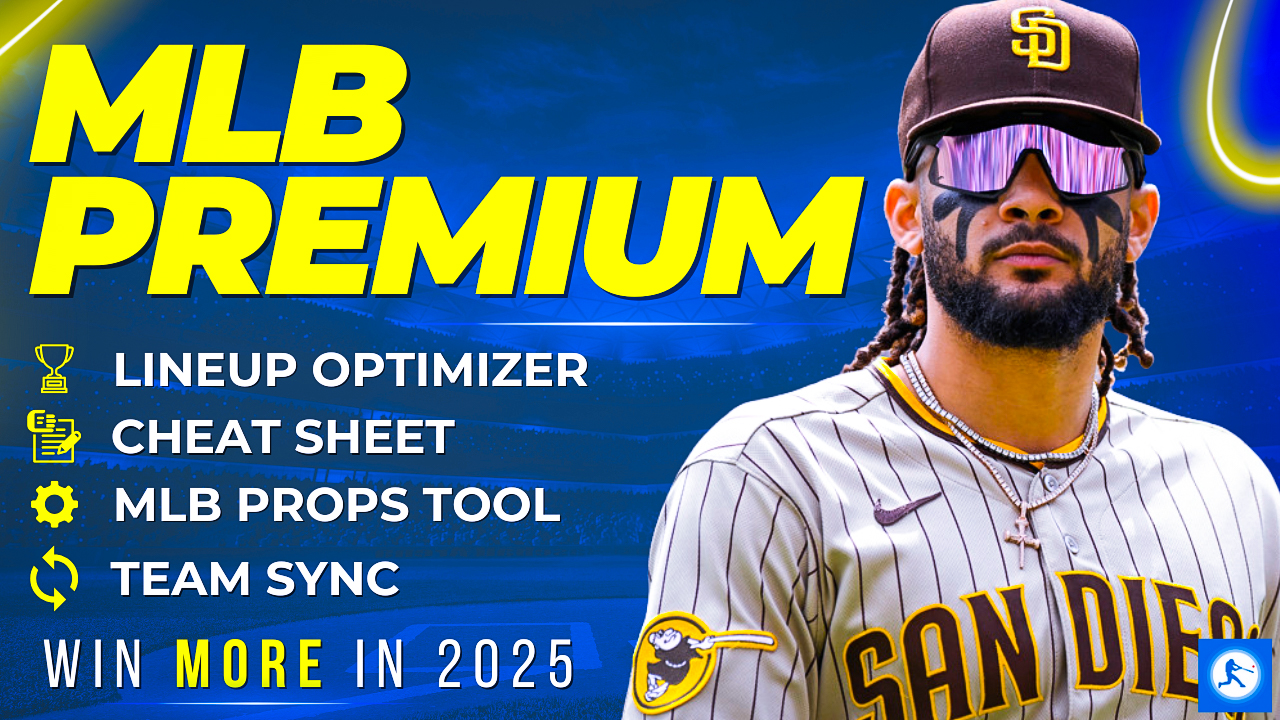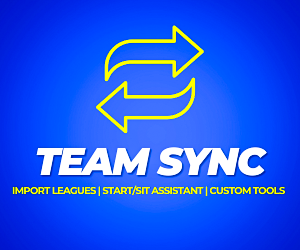Elliott Baas looks at starting pitchers who turned in surprising starts recently. These SP could emerge as waiver wire targets and sleepers, or simply mirages.
Welcome to the 2021 edition of "Are You For Real?" This is a weekly column where we dissect surprisingly good starts from under-rostered and unheralded hurlers to try and determine whether they can maintain their performance, or if it was just a flash in the pan.
As April comes to a close, the days of hot starts wane, and a pitcher's 2021 trends become that much more meaningful. That's why this week we're going to look at three pitchers who were stellar in April to see if these pitchers can have sustainable production, or if they are just benefitting from early season fortune.
Roster percentages quoted in this piece are based on Yahoo availability and are accurate as of 04/26/2021.
Be sure to check all of our fantasy baseball lineup tools and resources:- Fantasy baseball trade analyzer
- BvP matchups data (Batter vs. Pitcher)
- PvB matchups data (Pitcher vs. Batter)
- Who should I start? Fantasy baseball comparisons
- Daily MLB starting lineups
- Fantasy baseball closer depth charts
- Fantasy Baseball live scoreboard
- Fantasy baseball injury reports
Alex Wood, San Francisco Giants
40% Rostered
2020 Stats: 12.2 IP, 6.39 ERA, 5.01 FIP, 2.5 K/BB ratio
04/23 vs. MIA: 7 IP, 1 H, 1 ER, 1 BB, 7 K
Once an effective, reliable starter for the Dodgers, injuries have derailed Wood’s career. He has just 47.1 big league innings and posted a 5.96 ERA between 2019-2020. The beleaguered lefty has come out firing in his first two starts for the Giants, posting a 0.75 ERA and 11.0 K/BB ratio over 12 innings. His most recent start was his best, as Wood allowed just one run and put up his highest strikeout total since 2019. Based on his track record, we know that Wood can be an above average starter. However, at age 30 with a plethora of elbow, back, and shoulder issues to his name, one has to wonder whether the current version of Alex Wood can come close to the prime version of himself.
At his peak, Wood’s bread-and-butter was a sinker-slider combination that allowed him to generate an above average ground ball rate while putting up respectable strikeout numbers. Altogether, Wood has a three-pitch arsenal consisting of the sinker, slider, and changeup. While many pitchers only use their slider against same-handed batters and their changeup against opposite-handed batters, Wood isn’t afraid to use all three pitches against anyone, and due to the loopy, slurve-like nature of his slider, Wood can effectively use his best pitch against right-handed batters. That is crucial for any left-handed starter. Both righties and lefties have a .249 AVG against Wood all time, with righties having a slight edge in wOBA (.303 vs. .277).
Through his first two starts Wood has used the slider 39.2% of the time, which is by far a career high. He also has an additional two inches of drop and break on the pitch this season compared to 2020. The increased usage and improved movement helped Wood pile up 10 whiffs with the slider in his most recent start, and has given him a monster 27.4% swinging strike rate with his slider this year. Obviously, this is a small sample size and I’d like to see him do it against a team that isn’t the Marlins, but the changes in his slider are quite encouraging.
In addition to his slider changes, Wood is also experiencing a velocity revolution. He’s average fastball velocity thus far has been 91.4 MPH, which may not be an impressive number in today’s game, but it’s the highest fastball velocity he’s posted since 2017. 2017 was also Wood’s best season, where he went 16-3 with a 2.72 ERA and a 3.97 K/BB ratio. He may never return to those heights, but Wood has had the most success and generated the highest ground ball rates when his fastball sits around 91. If, like fellow Giants teammate Kevin Gausman, Wood can recapture his peak velocity, he could be in line for a career renaissance.
The biggest concern with Wood is and always has been health. Despite spending parts of nine seasons in the big leauges, Wood has managed to throw over 100 innings just four times, and hasn’t thrown more than 100 since 2018. Not only do the injuries keep Wood off the mound, but they have affected his performance when he does pitch. Given how Wood’s previous two seasons have gone, it looked like the injuries had eroded his talent and he’d never be an effective pitcher again. If he doesn’t feel right, Wood could do a lot of damage to your ratios before he’s pulled or lands on the IL. I’d be wary of using him in hitter-friendly ballparks until he builds up a little more trust.
It almost goes without saying, but Wood’s hot start has been aided by some good fortune. He has just a .111 BABIP against and a 100 strand rate. He has helped himself in the BABIP department by keeping the ball on the ground and limiting line drives, but these things will normalize over time. Still, if healthy, Wood could return to being a solid, sub-4 ERA hurler with a modest 20-23% strikeout rate. Don’t count on more than 100 innings, but I think Wood is worth using when healthy.
Verdict:
It’s only been two starts, but early indicators point to a healthy, revitalized Alex Wood. That in itself is amazing to see consider how broken he looked over the last two seasons. His fastball velocity has returned to its peak, and his slider has gained two inches of drop and break this season. Wood is worth the add in any league deeper than 12 teams, though given his roster percentage, he's probably already taken in those leagues. He’s a perfectly viable streamer in the right situation regardless of league depth. As it lines up now his next start is against the Rockies at home on Wednesday the 28th, which is an excellent streaming opportunity. His start following that would be against the same Rockies in Coors Field. It's probably best to avoid him in that spot. Wood probably won't light the world on fire as a big 2021 breakout, but he's a solid starter with mixed league appeal.
Chris Flexen, Seattle Mariners
9% Rostered
2019 Stats (Last MLB season): 13.2 IP, 6.59 ERA, 5.56 FIP, 0.66 K/BB ratio
04/24 vs. BOS: 7 IP, 4 H, 1 ER, 1 BB, 7 K
Chris was Flexen his muscles Saturday, shutting down the potent Red Sox lineup while lowering his season ERA to a sparkling 2.74. It was the best start of Flexen’s career in many respects. Seven innings pitched was a career high. Seven strikeouts was a career high, and a 75 Game Score was a career high. While it was a career-best outing, the bar was admittedly low for Flexen going into this game. He looked like an absolute disaster for the Mets in his first go-round in the majors, posting an 8.07 ERA, 6.92 FIP, 1.9 HR/9, and 0.9 K/BB ratio in 68 innings between 2017-19. With numbers like that, it’s a miracle he even got 68 innings of work. The Mets let him go following the 2019 season and it was off to Korea for the embattled right-hander.
A year in the KBO may have been just what the doctor ordered, as Flexen tore through the league for a 10.18 K/9 (highest among qualified starters), a 3.01 ERA (fifth-best), 2.74 FIP (second-best), and 4.40 K/BB ratio (fourth-best). In fact, Flexen is just one of seven qualified starters to post a K/9 greater than 10.0 in the KBO since 2002 (as far back as their leaderboards went). This season was good enough to earn him two-years and 4.75 million dollars from the Mariners this offseason, and Flexen is off to a great start so far. We often hear about players reinventing themselves in foreign leagues, but the results when returning to the majors have been mixed. For every Miles Mikolas there’s a Matt Moore lurking around the corner, ready to crush your fantasy dreams. It’s time to put Flexen under the microscope to see which end of the spectrum he falls under.
In order to understand how good Flexen can be now, we need to first look at what made him so bad with the Mets. As much as I want to chalk it up to “LOLMets”, it's a little deeper than that. On the mound, Flexen uses a four-pitch mix. He has a four-seam fastball, cutter, changeup, and curveball, but this wasn’t always the case. Flexen used to throw a more traditional, sweeping slider as his primary breaking ball. He retooled the pitch into a harder, sharper cutter while in Korea. Below is a comparison of Flexen’s cutter from his most recent start (top), and a slider from 2018 (bottom).
If you can get past how eerie a full stadium of mask-less fans looks through 2021 goggles, the difference in movement is noticeable, and it’s shown in the results thus far. Flexen’s slider has been pulverized by major league hitters for a .373 AVG and .542 SLG, while opponents are hitting just .250 with a .306 SLG through his first four starts.
Flexen’s cutter has less sweeping, dramatic movement compared to his slider, which on its face seems like something that would hinder his strikeout rate. However, this should benefit Flexen in the long run. It looks like he has better command of the cutter, as Flexen has a 57% zone rate with the pitch this season compared to a 48.5% zone rate with his slider all time. Of course, a slider doesn’t necessarily need to be in the zone to be effective, and often times shouldn’t be in the zone. During his tenure with the Mets it often looked like Flexen had no idea where his slider was going to end up once it left his hand. It was a big contributor to his 7.1 BB/9 with the Mets, and to his .373 AVG against the pitch. To best visualize this, let’s compare a cutter heatmap from this season (top) to a slider heatmap from 2017-19 (bottom).
Flexen has done a much better job controlling the mid-low outer half of the zone (against righties) with his cutter compared to his slider. Righties have actually performed better against Flexen than lefties for his career, so keeping the ball away from right-handed hitters is imperative.
The cutter not only offers Flexen an upgrade over his previous slider, but it allows him to use his four-seam fastball less often. Flexen previously used his fastball more than 60% of the time, but he has only used it just 33% of the time this season, with his 32.7% cutter usage picking up the slack. The less Flexen has to rely on his fastball, the better. Opponents are hitting .444 with a .630 SLG against the pitch. Those results should get better with time, but Flexen’s fastball is exceptionally average, with roughly league average velocity (92.3 MPH) and spin rate (2108 RPM). It can touch 95 MPH, but for the most part, major league hitters can handle the pitch. Higher cutter usage can only help Flexen shield his fastball from overexposure.
Flexen complements his fastball-cutter combination with a changeup and curveball, two pitches that have been effective for him this season. Batters are hitting just .143 against his changeup with a microscopic 7.7% line drive rate, and his curveball has a 31.4% chase rate, his highest among all pitches. Flexen’s changeup was just about his only good pitch prior to 2020, and he’s increased his usage to 19.3% this season. He’s also thrown 32.3% of his changeups to right right-handed batters compared to just 13.0% of the time in previous seasons. That’s helped Flexen improve against same handed opponents, as righties have a .285 wOBA against him this season, a stark improvement from his .404 wOBA all time. Flexen’s curveball is his least used pitch, but he’s added about an inch of vertical movement and half an inch of break to the pitch since we last saw it. He’s also using the curveball 15% of the time, making it a significant piece of his arsenal, as Flexen was using it under 10% of the time previously.
Verdict:
I’m often skeptical of the overseas reinvention narrative afforded to players returning to MLB, but it does look like Flexen has made legitimate, tangible improvements. At the very least, he’s a better pitcher than he was prior to playing in the KBO, though that’s hardly an accomplishment. A solid cutter both replaces a below average slider and takes the load off his four-seamer, while an effective changeup and curveball round out his arsenal for a four-pitch mix that can help Flexen find success as a starter. His strikeout rate will probably be underwhelming since Flexen has just an 8.5% swinging strike rate, which is a career-high, but it is still below average in today’s game. Overall, Flexen is a sneaky add in deep leagues, as his fast start has gone mostly under the radar. He should be picked up in leagues deeper than 12 teams.
Brady Singer, Kansas City Royals
56% Rostered
2020 Stats: 64.1 IP, 4.06 ERA, 4.08 FIP, 2.65 K/BB ratio
04/24 @ DET: 7 IP, 3 H, 1 ER, 0 BB, 8 K
Singer came out firing on Saturday, tossing seven innings of one-run ball while tying a career high with eight strikeouts. Sure, this start came against a weak Detroit lineup, but it was the third consecutive start where Singer allowed one earned run or fewer. It was also the third time in his career that Singer went seven innings in a start, and it’s beginning to look like the young righty has turned a corner for Kansas City. So, what say fantasy managers? Should we sing(er) Brady’s praises, or will he wind up a one-hit wonder?
Singer could be called a two-hit wonder because the 24-year-old throws two pitches nearly 96% of the time. He throws a 94.2 MPH sinker 60.2% of the time and a 85.3 MPH slider 35.6% of the time. Singer has flirted with a changeup, but thus far has thrown just 13 changeups this season, all to left-handed hitters. He didn’t toss a single changeup in his most recent start against Detroit despite six of their nine batters hitting either left-handed or switch. It’s a wonder why Singer doesn’t trust his changeup more, as opponents are hitting just .154 with a .231 SLG against the pitch all time, though that only accounts for 63 total pitches thrown. The pitch does have a 90.5% contact rate, a 27.2% line drive rate, and a meager 3.2% swinging strike rate as well, so it’s likely that Singer’s batted ball outcomes have been lucky over a small sample, and with greater usage comes pain.
When it comes to the two pitches Singer actually uses, they’ve been pretty good to him. He’s added almost a full MPH to his sinker and two MPH to his slider this season, and batters are hitting under .230 against both pitches for Singer’s career. The slider is what Singer was known for coming through the minors, and it’s the main reason he was one of the highest-ranked prospects in a deep Kansas City farm system. The slider has above average break and Singer commands it well, making in an effective weapon against both right-handed and left-handed batters. One of the biggest issues a two-pitch pitcher can encounter is large platoon splits, because the breaking ball is easier to read for an opposite-handed batter. However, Singer has been equally effective against righties and lefties, allowing a .218 AVG to batters of each side. However, lefties have a slightly higher wOBA at .294 vs. .257, but both marks are impressive. Singer uses his slider against lefties by going inside to jam them, or hopefully get them to chase. Here are a few examples from this start.
Yowza, that pitch is so dirty Justice Potter Stewart would declare it obscene. The slider was responsible for six of Singer’s 15 whiffs in this game and a had monster 43% whiff rate. It wasn’t all rainbows and butterflies though, as Singer’s lone run allowed came on a slider that was sent flying over the right field fence. Here’s what the home run looked like.
It’s hard to call that pitch a mistake, as I think Singer put it where he wanted. It was more an impressive read and swing by Willi Castro that made Singer regret throwing that baseball. This home run highlights the bigger issue with Singer’s two-pitch approach. Maybe that wasn’t a bad slider, but when you only throw two pitches, a batter can guess what’s coming rather easily, and as I mentioned earlier, a left-handed batter can read breaking balls from a right-handed pitcher. Singer has never had a homer problem, and limiting homers was a skill for him as a prospect, but when they do come more often than not it will be on a slider and from a lefty.
So, we know Singer’s slider can do its job as a strikeout pitch, but can the sinker do its job generating ground balls? So far, the answer is yes, Batters have a 1-degree average launch angle and a 66% ground ball rate against the pitch this season, and have zero extra-base hits off of Singer’s sinker. With a .171 BA, .194 xBA, and .276 xSLG, this sinker lives up to its name. He has above average velocity with the pitch, along with two more inches of drop compared to league average. Singer has been able to generate ground balls at every level, and with a ground ball rate above 53% in both 2020 and 2021, this is looking like a repeatable skill for Singer.
There’s always a reason to be skeptical of two-pitch pitchers when they do well. Take Singer’s counterpart in this game, Matthew Boyd. Boyd has one of the best slider’s in baseball. It's better than Singer’s and drew him comparisons to Patrick Corbin in his prime. However, Boyd’s limited repertoire and suspect command led to problems with the longball and control issues. Boyd has reworked his changeup and upped the usage this year, giving him newfound success, but I digress. There are common pitfalls of two-pitch pitchers: home runs, walks, and increased chance of injury due to an overreliance on a breaking ball, usually a hard or sweeping slider. Some have thrived in spite of those flaws, but Singer hasn’t experienced them like many of his two-pitch contemporaries. His ability to generate ground balls coupled with his pitcher-friendly home ballpark should help Singer keep the ball in the yard, and he’s only had a walk rate above 7% once in his professional career. That was in his rookie campaign. Singer probably won’t get the big strikeout numbers we see from fastball-slider guys like Matthew Boyd, Dinelson Lamet, and Chris Archer at his peak. However, Singer could be a more stable, less exciting version of those pitchers.
Verdict:
Singer solely slings sinkers and sliders. He slings them well, and can get ground balls and strikeouts with the combination. There could be another level to Singer’s game if he develops that changeup into a viable third pitch, but that’s unlikely to happen during the season. What we see is what we get for this year, and it looks like a solid starter. Singer has been susceptible to the rough outing from time to time, so I still wouldn’t trust him in difficult matchups. However, I do think he’s all systems go against weak and moderate lineups. His next start comes Friday at Minnesota, and I’d probably avoid him there in categories or Roto, even with Minnesota’s recent struggles. If the Royals’ rotation doesn’t change, his next start would be May 5 versus Cleveland, and he’d have a two-start week at Detroit and at the White Sox after that. He's worth the add in 12-team leagues or deeper.
Download Our Free News & Alerts Mobile App
Like what you see? Download our updated fantasy baseball app for iPhone and Android with 24x7 player news, injury alerts, sleepers, prospects & more. All free!

More Fantasy Baseball Sleepers





 RADIO
RADIO


























